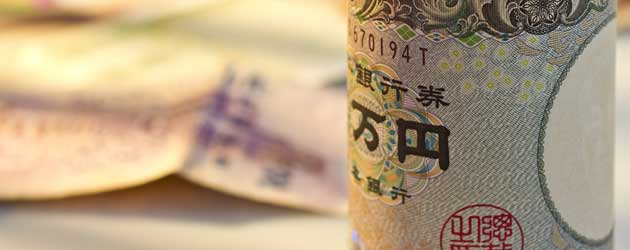
The Japanese Yen continued to soften against major currency peers like the Pound (JPY/GBP) and US Dollar (JPY/USD) on Thursday despite Japan’s Manufacturing Purchasing Managers Index (PMI) exceeding expectations. The GBP to JPY exchange rate is presently trending in the region of 172.4200 whilst the US Dollar to Japanese Yen currency pair remains within the bounds of 107.0800 and 107.2100.
Japan’s Markit Manufacturing PMI Exceeds Economists’ Forecasts
Thursday’s data saw the preliminary pace of growth in the Japanese manufacturing sector hasten in October. Initial predictions were for the index to remain at 51.7 as it was in September; however, the actual figure climbed over an index point higher to 52.8. Any PMI figure above 50 shows expansion, whereas below denotes contraction.
Markit economist Amy Brownbill commented on the favourable figures, stating: ‘Latest data indicated robust growth of operating conditions for Japanese manufacturers. New business rose at the highest rate since February and output remained in modest growth territory for the third month in a row. Furthermore, payroll numbers rose fractionally during the month, following a decline in September.’
Japanese Trade Deficit Widens Beyond Forecasts
Demand for the Yen was undermined on Wednesday when the Japanese Merchandise Trade Balance extended its deficit in September despite exports surging thanks to a weaker Yen and Apple’s new phone release.
The adjusted deficit crept from -912.4 billion Yen in August up to -1070.1 billion in September, defying economists’ forecasts to reach only -918.5 billion. However, some believe that the recent speculation of a global slowdown and drop in commodity prices could contribute to improvement in the trade balance. Economist Taro Saito commented: ‘This may push down import prices, which could significantly contribute to an improvement of the trade balance.’
The Japanese safe-haven currency has depreciated by 26% versus the ‘Greenback’in the latter two years which, although stimulating company profits, has considerably bruised the purchasing ability of working citizens. Therefore, the debate over the need for increased Japanese inflation has intensified.
Morgan Stanley spokesperson Hans Redeker commented: ‘Real disposable income is weakening. The government is very worried what the decline in real disposable income does to the approval rating at a time when reform is required. It definitely is the reason why we’ve seen a significant change in the rhetoric of the Japanese authorities.’
Dollar Strength Continues to Push JPY/USD Lower
Furthermore, the Yen weakened to its lowest level in six years versus the US Dollar in September as ‘Buck’ strength continues to sweep the market. The ‘Greenback’ has been popular amongst investors in the last few months, and has found renewed strength on Thursday on the prospect of it undertaking its most extended rally since 2008 against other major currencies.
The USD/JPY exchange rate in particular saw gains as Economic experts Jeffery Gundlach and Scott Mather suggested that US economic growth is likely to reach 4% in the next few years in comparison to Japan’s 0.8%. Moreover, Mather suggests that the US Dollar is likely to continue to be a strong contender against other currency peers for years to come.
Pound Exchange Rate Softens on BoE Minutes, Retail Sales Disappoint
The Pound fell on Wednesday after meeting minutes showed the same divergence in votes for interest rate hikes as on the last two occasions that the Monetary Policy Committee (MPC) assembled. Sterling losses were extended on Thursday followingthe release of UK Retail Sales figures.
UK retail sales unexpectedly declined by -0.3% on the month in September, defying expectations for stagnation and causing broad-based Pound Sterling exchange rate losses.
Chinese Manufacturing also Expands, Allowing CNY/JPY Gains
The Chinese Yen (CNY) has been trading higher versus the Japanese Yen after China’s Flash Manufacturing PMI also rose in October. The HSBC PMI saw an unexpected rise from 50.2 to 50.4 despite economists’ forecasts of stagnation, thereby confirming continued, moderate expansion in China’s manufacturing sector.
As a result of the three-month high reading, the Yuan rose to a 33-week high. Both the JPY/CNY and USD/CNY exchange rates softened on the news as improved investor sentiment in China saw its currency advance.
However, Yuan gains may be short lived, with speculation for a slowdown in China a very real fear. HSBC Chief Economist Qu Hongbin commented: ‘While the manufacturing sector likely stabilised in October, the economy continues to show signs of insufficient effective demand.’
Japanese Yen Exchange Rate Forecast
Japanese data is thin on the ground over the rest of the week. However, looking ahead Tuesday will see Japanese Retail Trade and Large Retailers’ Sales figures released, followed by the nation’s Small Business Confidence Index. Industrial Production figures are out on Wednesday, whilst Friday could be the most influential day for the Japanese Yen exchange rate with the publication of the National Consumer Price Index—a factor that could add to the inflation debate mentioned earlier.
At a time where geopolitical tensions are high, the prospect of investors seeking safe-haven assets such as the Yen is likely. The current JPY to CNY exchange rate is 0.0572.
Japanese Yen (JPY) Exchange Rates
[table width=”100%” colwidth=”50|50|50|50|50″ colalign=”left|left|left|left|left”]
Currency, ,Currency,Rate ,
Pound Sterling, ,Japanese Yen, 172.6900,
,Japanese Yen, 172.6900,
US Dollar, ,Japanese Yen ,107.5200 ,
,Japanese Yen ,107.5200 ,
Euro, ,Japanese Yen ,136.7200 ,
,Japanese Yen ,136.7200 ,
Australian Dollar, ,Japanese Yen ,93.8800 ,
,Japanese Yen ,93.8800 ,
New Zealand Dollar, ,Japanese Yen,85.0700,
,Japanese Yen,85.0700,
[/table]

